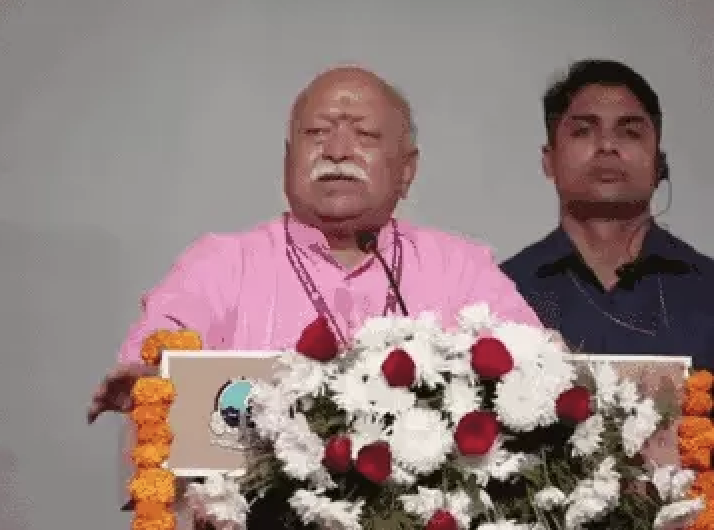
By SANJIB BARUAH / Frontline
It is hard not to see the Citizenship (Amendment) Bill as a major move to introduce into Indian citizenship laws a distinction between Hindu and Muslim immigrants crossing Partition borders. While this marks a historic departure from India’s long-standing disavowal of the Two Nation Theory, in the immediate context it translates into a selective faith-based amnesty for a large segment of the 1.9 million people not included in the National Register of Citizens in Assam.
Few laws in the world have as grand and evocative a name as the Magna Carta (“Great Charter”) or the Magna Carta Libertatum (the Great Charter of Freedoms). The 800-year-old document is celebrated for having established the idea that we now call “the rule of law”. Though, the charter in its original form, as historian Jill Lepore suggests, was perhaps little more than a promise made by King John to “stop throwing people into dungeons whenever he wished”. Only later it acquired the meaning of “a right possessed by the people.”Such grand nomenclatures, however, are rare in the history of law-making. But even the most innocuously named laws can represent profound shifts in a nation’s public philosophy. India’s Citizenship Amendment Bill (CAB) of 2019 is a case in point. Its ostensible purpose is to shelter persecuted religious minorities from Afghanistan, Bangladesh and Pakistan. It seeks to put Hindus, Sikhs, Buddhists, Jains, Parsis and Christians from these countries who came to India before December 31, 2014, even if they entered illegally, on a path to Indian citizenship. However, Muslim groups such as Ahmadis, certainly a persecuted religious minority in Pakistan, are conspicuously absent, as are Hindu Tamil refugees who fled Sri Lanka.
Despite the selective humanitarian rhetoric of ruling party politicians, it is hard not to see the CAB as a major move to introduce into Indian citizenship laws a distinction between Hindu and Muslim immigrants crossing Partition borders. This radically changes the meaning of Indian citizenship. It marks a historic departure from India’s long-standing disavowal of the Two Nation Theory—the narrative behind the creation of Pakistan.
In the immediate contemporary context, the CAB translates into a selective faith-based amnesty for a large segment of the 1.9 million people not included in the just-completed National Register of Citizens (NRC) in Assam. Only Muslims who were excluded from it now risk being pushed into a state of precarious citizenship. For all practical purposes, Hindus and other non-Muslims have been given de facto amnesty by the CAB. With this radical change in the meaning of Indian citizenship, the NRC now acquires a connotation at odds with the context of the migration-intensive history of Northeast India out of which it originated. It is this post-CAB version of the NRC the ruling establishment wishes to extend to the rest of India.
Even though the CAB lays out December 31, 2014, as the cut-off date of entering India, if the history of the past migration of Hindus from Bangladesh to India is any guide, this law is sure to trigger more migration from across Partition’s eastern border. The Hindu population of the territory of present-day Bangladesh (formerly East Pakistan) has declined dramatically over the seven decades since Partition mostly as result of emigration to India. They were 22 per cent of the total population in 1951. The proportion came down to 12 per cent in 1981; and it was only 9 per cent in 2011. There is little doubt that the CAB will push more Hindus to choose the exit option. To be sure, the CAB does not say that Indian citizenship will be open to any Bangladeshi Hindu. But there is much in the global history of migration to suggest that laws like the CAB have important signaling effects to encourage migration flows. It is not unlikely, for instance, that the CAB would incentivise anti-Hindu extremists in Bangladesh—eager to lay claims on the properties and possessions of the Hindu minority–to make sure that welcome mat that India has laid out to Bangladesh’s minority population is fully utilised. Northeast India’s historical problem with immigration from that region will only get worse. It is hard to see how it will produce a more peaceful Northeast India.
Considering these potentially far-reaching consequences, the Bill’s nomenclature is a remarkable exercise in understatement. In this era of political marketing, its innocuous-sounding name and the appearance of incremental change is perhaps not accidental. Its appeal may be precisely because it hides the true significance of this law and insulates it from international attention and scrutiny.
“Unfinished business” of Partition
The CAB is best seen as what some in India have long believed to be an unfinished piece of Partition business. It seeks to adapt India’s citizenship laws to “the compelling logic of the consequences of partition” as former External Affairs Minister Jaswant Singh phrased it in a pioneering 1984 essay on “Assam’s Crisis of Citizenship”. The compelling logic he alludes to is that Hindus will continue to come to India from across the Partition border no matter how Indian law defines citizens and aliens. Unlike Jaswant Singh, who remains one of Hindu nationalism’s best-known moderate voices, Hindu majoritarians are not given to such nuanced formulations. The Rashtriya Swayamsewak Sangh (RSS) chief Mohan Bhagwat has declared repeatedly that no Hindu can be a “foreigner” in India.
Historians have long cautioned against the temptation to view Partition as a single, one-time event. Partition, in Joya Chatterjee’s words, was “a messy, long-drawn-out process. It was in no sense finally or tidily concluded in August 1947; indeed, one could argue that the process had just begun, and that it is still unfinished today.” This political trajectory is not unique to India’s Partition. The “unfinished business” of partition, writes Arie M. Dubnov, a historian of twentieth century Jewish and Israeli history, dominates political life in the post-partition spaces of all three instances of paradigmatic British partitions: Ireland, India and Palestine.
Resistance in Northeast India
When it comes to the question of immigration from across Partition’s eastern border, Assam and Northeast India have long presented an enduring obstacle standing obstinately in the way of pan-Indian narratives and pan-Indian political forces of all stripes. This should not come as a surprise to the historically informed political observer. Both migration from eastern Bengal to the territories of British colonial Assam and the opposition to it began well before Partition.
This story was originally published in frontline.thehindu.com . Read the full story here






